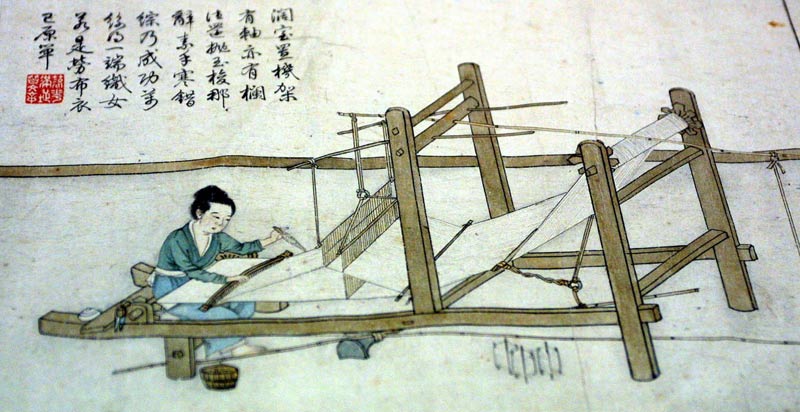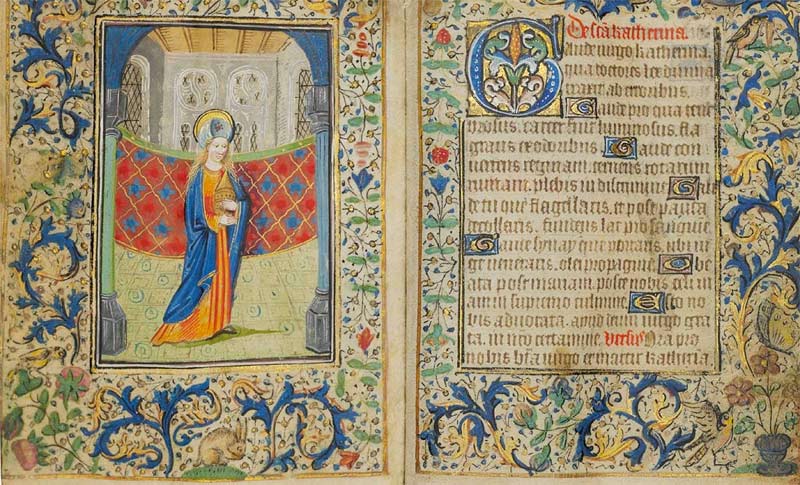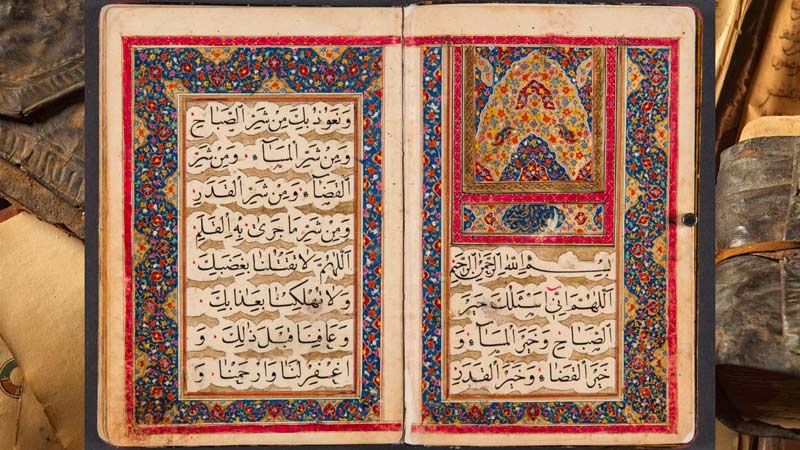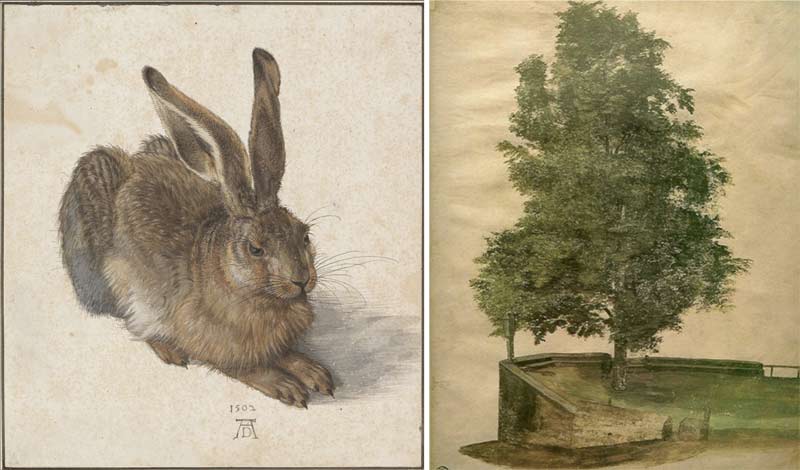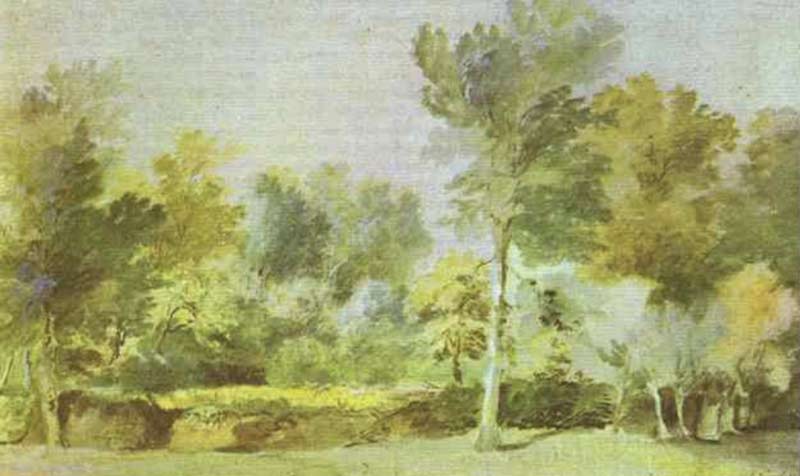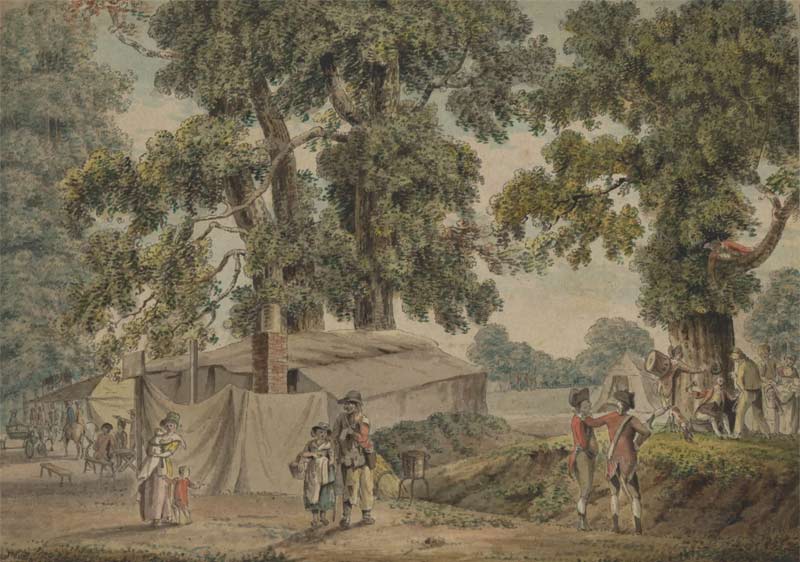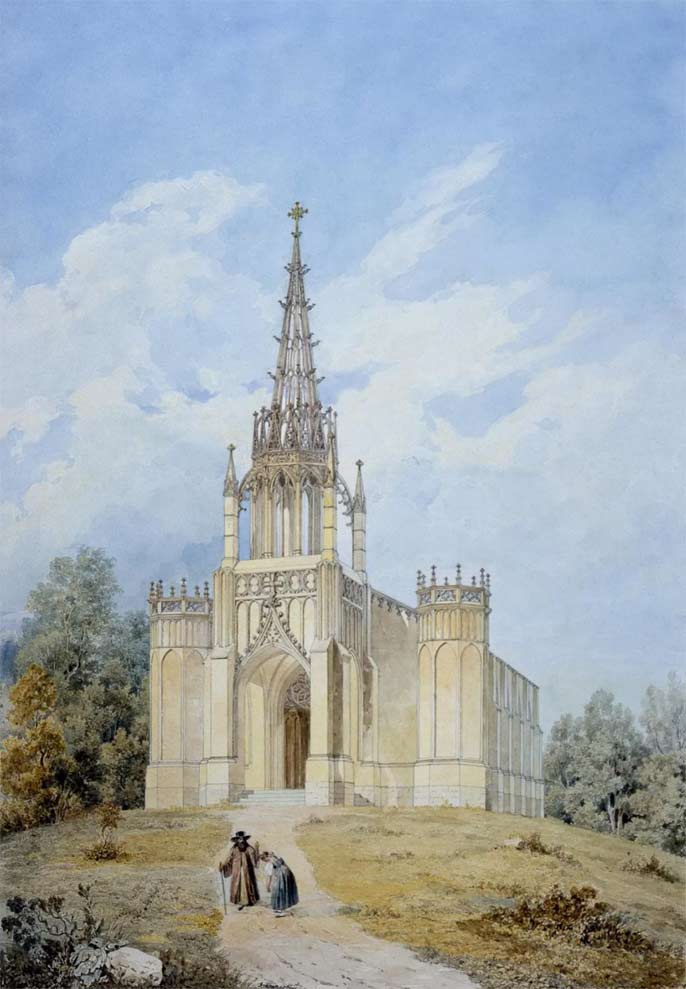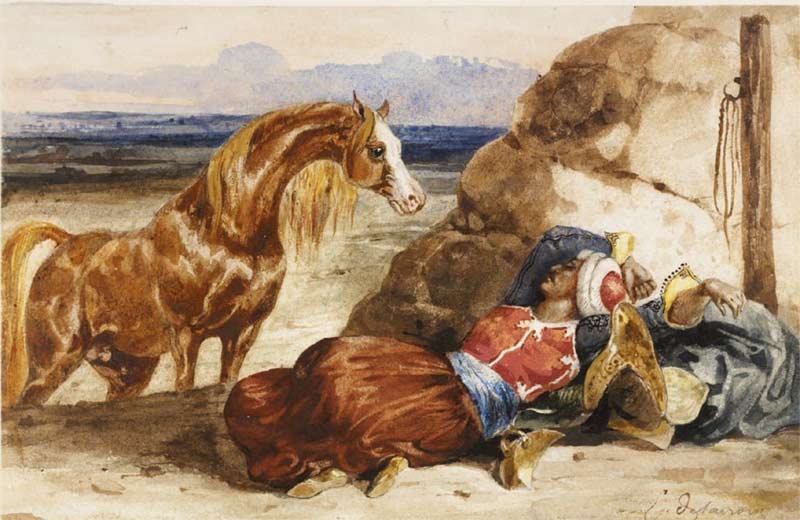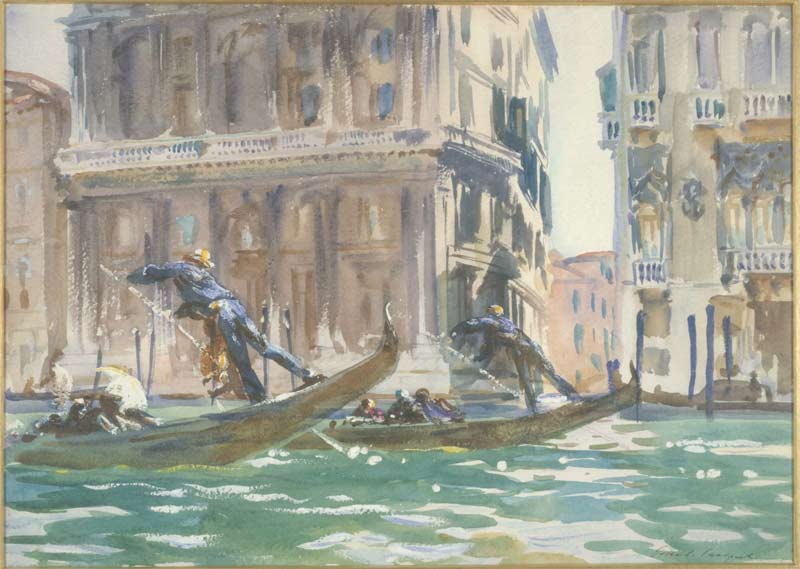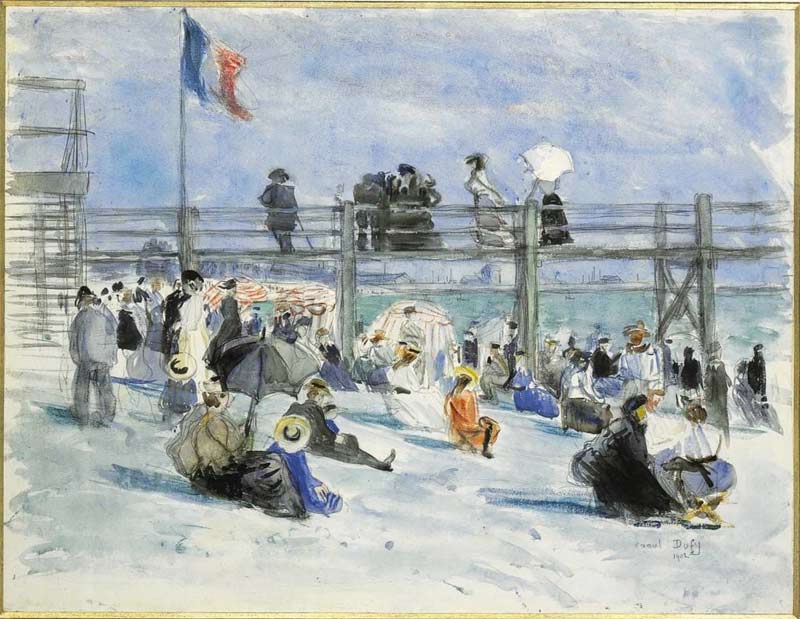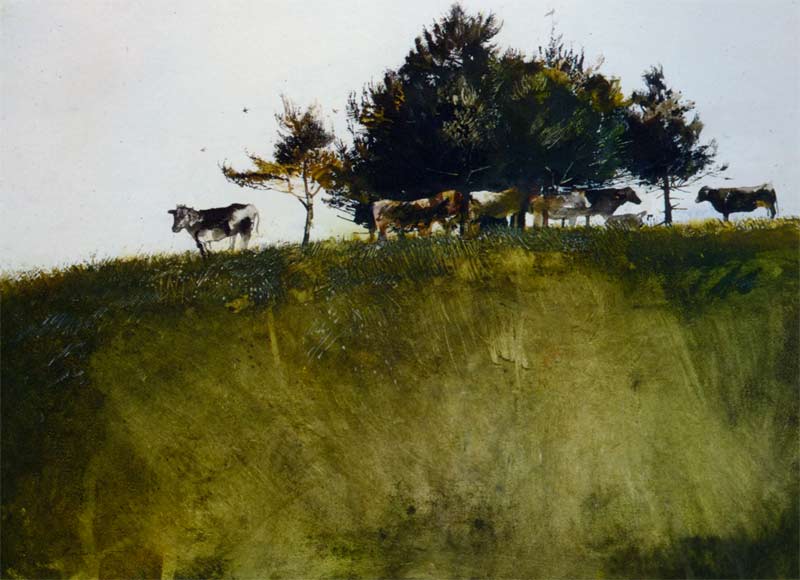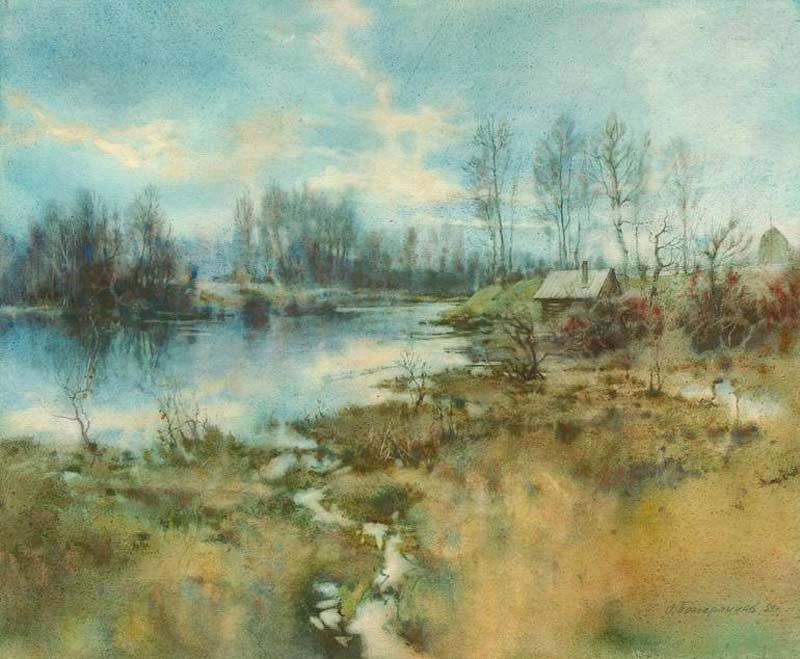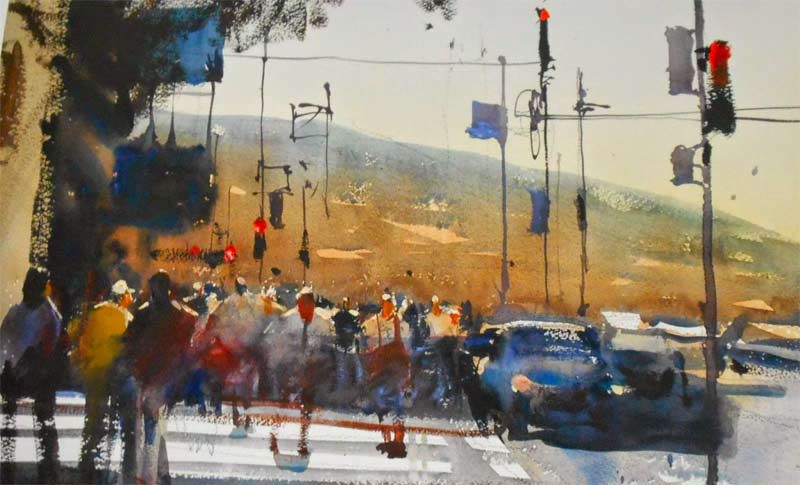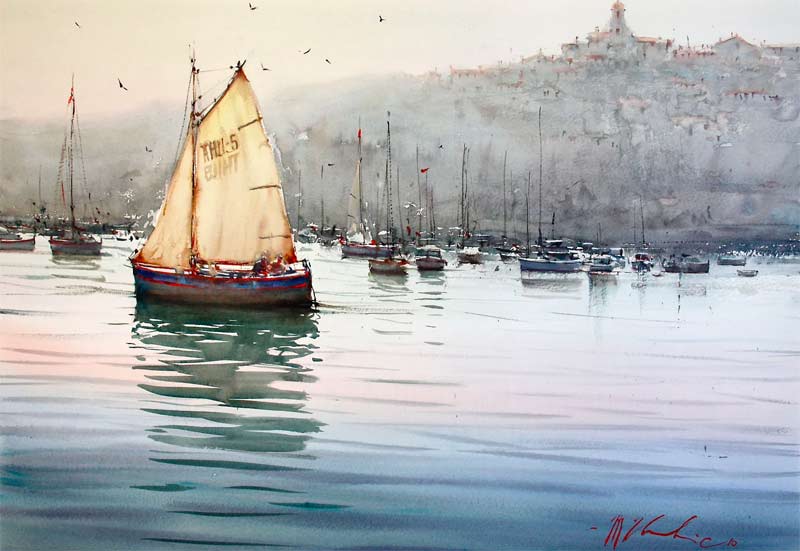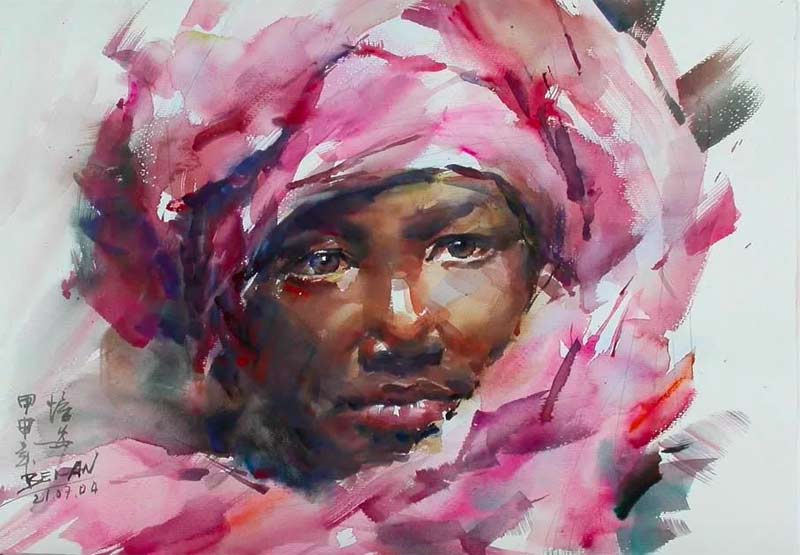The Place of Watercolor in the History of Arts
Article by Vladimir London, Watercolor Academy tutor
In this article, I will briefly describe the place of the watercolor medium in the history of arts
It is not well established when watercolor painting originates from. Perhaps watercolor is as old as art itself, dating back to the Stone Age when prehistoric man mixed earth and charcoal with water and painted the very first wet-on-dry artwork on a cave wall.
Fast-forward 30-40 thousand years and ancient Egyptians used water-soluble transparent paint to illustrate papyrus scrolls. They mixed earth pigments – e.g. ochres and siennas as well as minerals such as reds, cinnabar, blue azure, green malachite, etc. - with gum arabic and egg white. These water-soluble paints were, technically, watercolors. Many of these artworks survived to the present day with colors as bright as when they were created because of the dry climate and the hidden places where those artworks were found.
With invention of paper in China about 2000 years ago, the watercolor medium took another path where color of paper played an integral part in artwork. Chinese and Japanese masters also painted with watercolors on silk. Their art often featured calligraphy as well as contemplative landscape views, animals and pictures from everyday life.
During the European Middle Ages watercolor and body color was used by monks to illuminate hand-written books and manuscripts. The support was usually either parchment or vellum made from sheepskin or calfskin. Hand-painted books were intricately illustrated with biblical scenes, stories from saint's lives, historical events and similar topics.
Eventually the secrets of paper manufacturing spread from China to the Middle East and Arabs made some improvements on the technology. From the East, papermaking further expanded to the European continent.
Fifteen hundred years after the invention of paper, Europe celebrated great advances in drawing, painting and sculpture during the Renaissance period. By this time, paper was widely available for artists. This played an important role in the history of watercolors.
European watercolor as we know them today, have their roots in the Northern Renaissance. The German artist Albrecht Durer (1471 - 1528) was one of the first to recognize the potentials of this medium. He created breathtaking landscapes, wildlife pictures, topographical and botanical watercolor artworks.
During the Baroque period, watercolor was often the medium of choice to illustrate naturalist books, albums, scientific publications and for the creation of hand-painted maps and architectural plans. Watercolor was also very popular for miniature portraiture on paper, velum and ivory.
The Flemish artist Anthony Van Dyck (1599 - 1641) further advanced the watercolor painting technique, introducing translucent washes. This was an important innovation where artists first allowed the color of paper to shine through pigments and play a role in the artwork.
Such masters as Claude Lorrain (1600 or 1604/5 - 1682), Giovanni Benedetto Castiglione (1609 - 1664), and many other Dutch and Flemish baroque artists used watercolors.
Watercolor spread across Europe and by the end of the 18th century in Russia, watercolor was not just a craft for artists but a part of aristocratic education as well as a must-have skill for architects, engineers and military officers.
The English watercolor artists of the time often travelled with researchers on geological and archaeological expeditions to depict new worlds and discoveries. Middle-class housewives practiced watercolor along with stitching and piano paying. Watercolor had become a "national art".
During the "Golden Age of Watercolor" in England watercolor became an independent and established medium in art. Paul Sandby (1730–1809), the father of the English watercolor, Thomas Girtin (1775–1802), the landscape painter, and Joseph Mallord William Turner (1775–1851) refined watercolor painting techniques to new heights. There were many other artists who left their mark on the English watercolor school: Thomas Gainsborough (1727-1788), William Pars (1742-1782), John Sell Cotman (1782-1842), Samuel Prout (1783–1852) to name just a few.
By the 19th century watercolor had become so popular that several art societies had been established - the Society of Painters in Water Colours (1804, now the Royal Watercolour Society), the New Water Colour Society (1832, now the Royal Institute of Painters in Water Colours), and the Scottish Society of Painters in Water Colour (1878, now the Royal Scottish Society of Painters in Watercolour).
In Ireland, the Watercolour Society of Ireland (WCSI) was founded in 1870 and in Northern Ireland, the Ulster Watercolour Society (UWS) was created.
In Russia, the Russian Watercolor Society was founded in St. Petersburg in 1880.
Many Russian artists of the 19th century used watercolor in their art:
- Alexander Brullov (1798-1877)
- Vasily Sadovnikov (1800-1879)
- Ivan Aivazovskiy (1817-1900)
- Aleksei Bogolubov (1824-1896)
- Mikhail Klodt (1835-1914)
- Vladimir Makovskiy (1846-1920)
- Fyodor Vasiyev (1850-1873)
- Apollinary Vasnetsov (1856-1933)
- Isaac Levitan (1860-1900)
- Leo Bakst (1866-1924)
- Alexandre Benois (1870-1960)
In Europe, watercolor painting also became popular. It was an important medium for artists such as Eugène Delacroix (1798-1863), François Marius Granet (1775-1849), Adolph Menzel (1815-1905), Stanisław Masłowski (1853-1926) and many other distinguished painters and craftsmen.
Watercolor found its way to the American continent with the European artists who documented the "new world" and it became popular there in the 19th century. The American Society of Painters in Watercolor (now the American Watercolor Society) was founded in 1866. By the end of the 19th century, artists such as Thomas Moran (1837-1926), Thomas Eakins (1844-1916), John Singer Sargent (1856-1925), James A. M. Whistler (1834-1903), and many others had contributed to the American culture of watercolor.
At the beginning of the 20th century in Europe, Paul Signac (1863-1935) and Paul Cézanne (1839-1906) developed an impressionistic style of painting. The 20th century saw watercolorists such as the Russian abstract painter Wassily Kandinsky (1866-1944), the Swiss modernist Paul Klee (1879-1940), and the French expressionist painter Raoul Dufy (1877-1953).
In the USA, the Impressionism and Post-Impressionism European styles were often imitated. At the same time, many regional schools came to life. The Cleveland Museum of Art was the center for the "Cleveland" or "Ohio School" of painters. The California Water Color Society was founded in 1921 (now the National Watercolor Society).
After 1950s, watercolor art in the USA suffered a decline, giving way to abstract expressionism, amateur painters, and workshop-influenced painting styles. Nevertheless, artist like Andrew Wyeth (1917-2009), Philip Pearlstein (born 1924), Joseph Raffael (born 1933) and many others continued working in this medium.
Unlike in America and Western Europe, strong art school traditions in Russia kept the watercolor culture alive and many contemporary artists are still pushing the boundaries of the watercolor medium today. I will briefly mention just a few of my favorite artists below and leave you to discover their art on the internet.
Contemporary Russian watercolor artists:
- Oleg Pomerantsev (1948-2012)
- Evgeniy Dubitskiy (1951)
- Sergei Andriaka (1958)
- Konstantin Kuzema (1962)
- Sergey Temerev (1963)
- Sergei Alekseev (1967)
- Sergei Aldushkin (1967)
- Elena Bazanova (1968)
- Viacheslav Korobeinikov (1968)
Traditional watercolor techniques are still supported and practiced by many talented contemporary artists worldwide. Here are some of my favorites:
- John Yardley (1933 – 2011)
- Cheng-Khee Chee (1934)
- Guan Weixing (1940)
- David Taylor (1941)
- Steve Hanks (1949 - 2015)
- Sterling Edwards (1951)
- Joseph Zbukvic (1952)
- Mary Whyte (1953)
- Alvaro Castagnet (1954)
- Cao Bei-an (1957)
- Woon Lam Ng (1971)
This brief history is not intended to be a comprehensive review of watercolor art periods, styles and artists. I just want to encourage you with the old origins of this medium, its rich traditions and some inspirational artworks by contemporary watercolor artists.
To learn how to paint in watercolor, enroll now
Watercolor Academy Online Course
A self-study, self-paced course where you can learn how to paint in watercolor by watching video lessons and doing assignments
- Unlimited access to 80 watercolor painting video lessons
- Lifetime membership without deadlines
- Unlimited support from the Academy tutors
- Constructive critique of your artworks
- Member access to the Academy's Art community
- Place in the Academy's Students Gallery
- Exclusive members-only newsletter and bonuses
- Watercolor Academy Diploma of Excellence in your name
One-time payment - Lifetime membership
$297 USD
ENROLL NOW
Personal Tutoring online + Online Course
One-to-one, unlimited and custom-tailored to your skills and needs Personal Tutoring by the Watercolor Academy teachers
- Everything in Online Course, plus:
- Dedicated team of art tutors
- Assessment of your current level of art skills
- Personalized curriculum tailored to your skills and goals
- Up to 100 art tasks with by-task assessment
- Unlimited one-to-one personal coaching with detailed per-task instructions and feedback
- Artwork critiques and results-oriented guidance
One-time payment - Lifetime membership
$997 USD
ENROLL NOW

